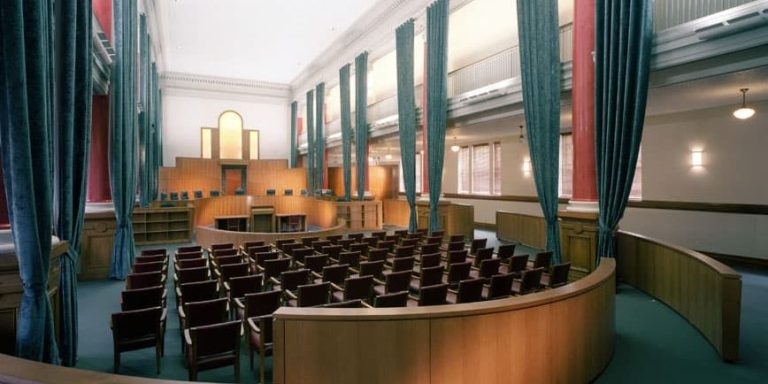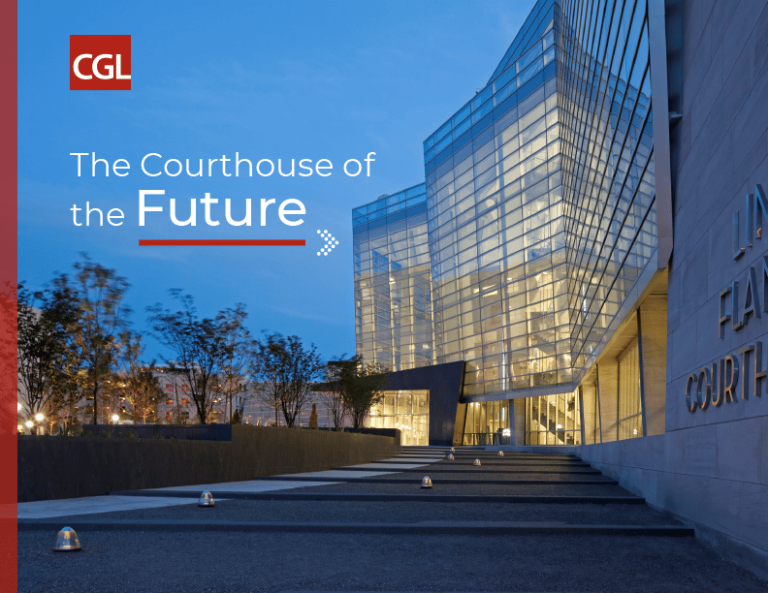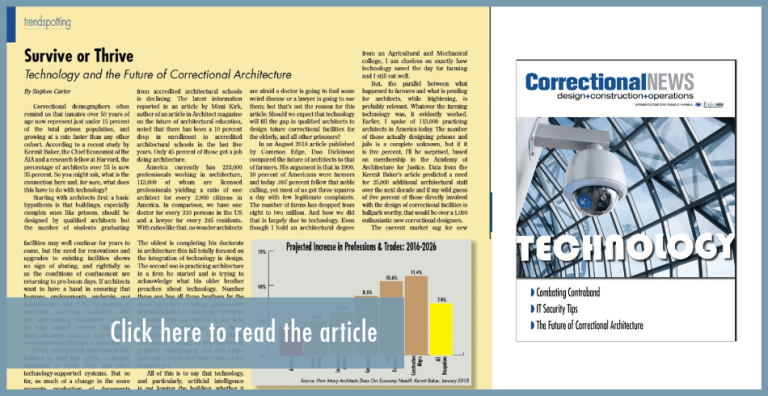
Courthouse Adaptation to COVID-19: What Does the Future Hold?
Courthouse planning requires architects to consider the types of spaces and amenities that meet current operational requirements and predict future expectations by developing specific strategies to determine their community priorities. While establishing effective forecasting methods can help identify potential challenges, not everything can be anticipated – such as the COVID-19 pandemic.
The COVID-19 pandemic has dramatically affected traditional ways of conducting business. Judicial functions must balance the responsibility of protecting the health and safety of judges, staff, litigants, and all other visitors while minimizing interruptions to justice services. We already see far-reaching implications of court services transforming to strike this balance, such as:
- Accelerated implementation of online services
- Introduction of self-service kiosks that limit in-person contact
- Increased use of digital evidence presentations
- More widespread use of video technology for conferences and even court proceedings
Within this new normal, courts are learning to provide more services online along with low-touch and no-touch audio-visual technology. Court-related data, such as orders, case filings, and dispositions, can all exist in highly secure electronic forms that remain accessible with little in-person requirements through electronic case management systems. Supporting the increase in Pro se representation, self-service kiosks provide case information, schedules, documents, and research resources, as well as e-file or access payment systems, while promoting social distancing practices with few – if any – renovations to the facility.
Inside the courtroom, presentation and management of evidence through large monitors and projectors have transformed the process of justice. Digital graphics, audio, and video recordings, and sensitive materials can all be made visible and accessible to jurors and the court through individual or group presentation screens, in person or virtually.
Additionally, utilizing video conference technology to conduct arraignments and dispositions or access remote witness testimony in civil cases allows all participants, even those deemed high-risk, to maintain proper social distancing guidelines. Circumstances surrounding COVID led Travis County to hold a misdemeanor jury trial virtually, the first of its kind in the country. If implemented permanently, we must recognize and rethink the size of the courthouse, the type of courtroom spaces required, and potentially reduce the number of necessary courtrooms.
The COVID-19 crisis forced the courts to react quickly and adjust to keep caseload moving. For example, courts found themselves making adjustments to their jury system, delaying jury calls, and spreading the volume of caseload over longer periods. Prior to COVID-19, some jurisdictions employed alternative methods for managing jurors. For example, Lexington, KY and Travis County, TX changed the jury process so those on jury duty don’t spend time in a jury assembly room awaiting empaneling. Instead, they report to the courthouse on only days when they must participate in the empaneling process. Travis County also conducts jury orientation online. Due to COVID-19, other court jurisdictions may follow suit.
As the pandemic evolves, courts continue to adapt. The new processes and procedures that courts adopt may gain traction and become a permanent standard practice, further transforming courthouse design and operations.



